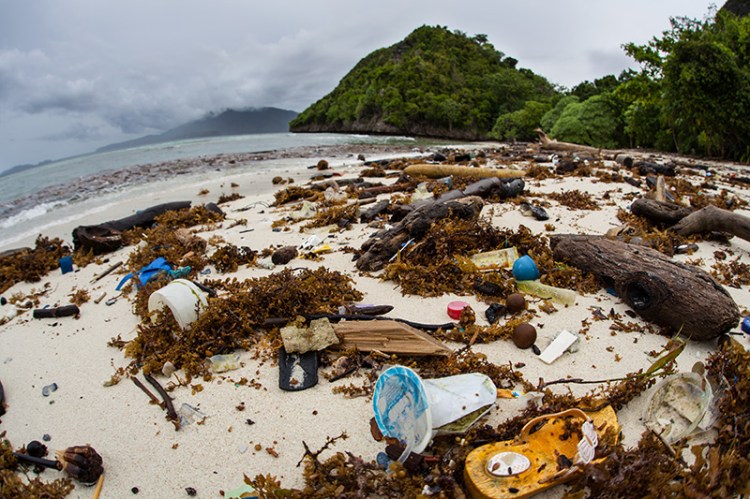The International Energy Agency has a sobering warning about the health of the world’s oceans.
The total amount of oceanic plastic waste is likely to more than double by 2030, and then keep getting worse, if action isn’t taken now, according to projections by the Paris-based organization in a report published Friday.
Arresting images of strangled turtles and tropical waves clogged with garbage have helped raise awareness about the threat to oceans from plastic waste.
But the IEA’s projections suggest that efforts to curb that pollution – such as the movement to ban plastic straws – may prove futile unless there’s a global revolution in recycling and waste management.
It’s estimated that around 100 million metric tons of plastic waste has already “leaked” into oceans, an amount that’s increasing annually by 5 million to 15 million tons, according to research cited by the IEA. The infamous Pacific garbage patch, which covers an area three times the size of France and holds the equivalent of 250 pieces of plastic for each person on earth, may only contain as much as 79,000 tons, the IEA said.
The problem is that recycling and waste management efforts aren’t keeping pace with the massive growth in plastic production and consumption. Less than 20 percent of plastic waste is currently collected for recycling, according to the IEA.
“Although substantial increases in recycling and efforts to curb single-use plastics take place, especially led by Europe, Japan and Korea, these efforts will be far outweighed by the sharp increase in developing economies of plastic consumption (as well as its disposal),” the agency wrote in its report on the petrochemical industry.
Global plastics production has increased by more than 10-fold since 1970, faster than any other group of bulk materials, according to the IEA. And demand has nearly doubled since the start of the millennium.
The agency projects that by 2050 production of a group of key thermoplastics including polyethylene terephthalate (used to make plastic bottles), polyethylene and PVC could grow almost 70 percent from 2017 levels. Global production would increase almost 30 percent to about 132 pounds per capita.
Send questions/comments to the editors.



Comments are no longer available on this story